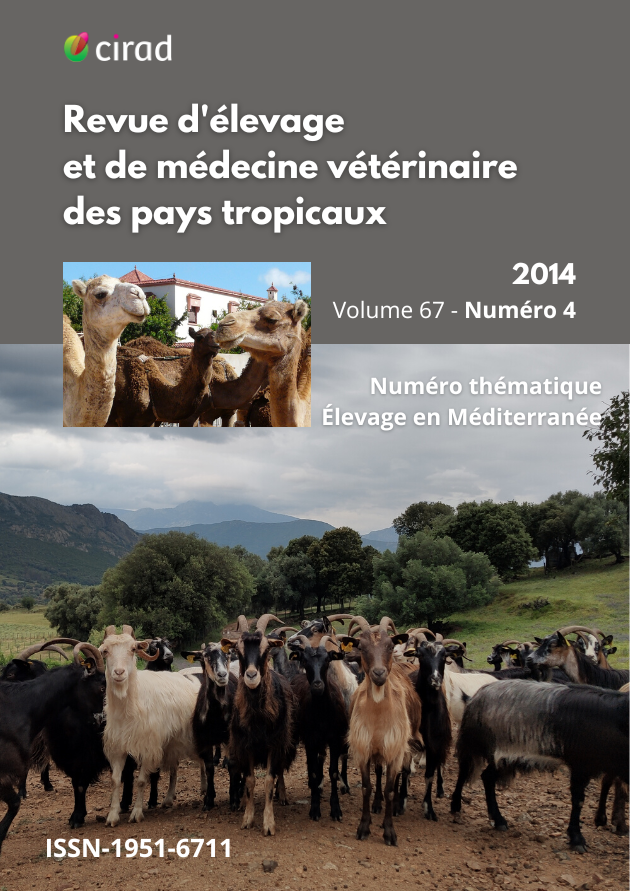Major plant poisonings in ruminants in the Mediterranean area
DOI:
https://doi.org/10.19182/remvt.20558Keywords
Ruminant, Poisoning, Hyoscyamus muticus, Ferula communis, Quercus coccifera, Cistus monspeliensis, Silybum marianum, AlgeriaAbstract
Plant poisonings in ruminants are rather common, but they remain little known and difficult to quantify because of the diversity of the toxic plants responsible for them. The impacts of plant poisoning in the Mediterranean Basin should be better evaluated to distinguish them from infectious origins. Indeed, veterinarians find it difficult to reach a diagnosis of plant poisoning and often incriminate infectious agents. It is therefore important to gather plenty of objective information, which often proves difficult given the approximative case descriptions. Some of these toxic plants are very widely distributed south and north of the Mediterranean, including in France. In contrast, others are relatively specific to the desert environment of North Africa and are present in particular in Algeria. The most frequently affected animals were sheep (61.5%), cattle (24.7%), camels (9%) and goats (4.6%). Poisonings encountered in ruminants were caused by Hyoscyamus muticus spp. falezlez (Coss.) Maire, Ferula communis L., Thapsia garganica, Hypericum crispum L., Tetraena cornuta (Coss.) Beier & Thulin, Drimia maritima (L.) Stearn, Quercus coccifera L., Nerium oleander L., Cistus monspeliensis L., Silybum marianum (L.) Gaertn., Sorghum drummondii (Stend.) Nees ex Millsp. & Chase, Pteridium aquilinum (L.) Kuhn, Malva parviflora L., Oxalis pes-caprae L., Sorghum halepense, Calobota saharae, Diplotaxis harra (Forssk.) Boiss.Downloads
Downloads
-
Abstract2148
-
PDF (Français)4959
Received
Accepted
Published
How to Cite
Issue
Section
Categories
License
© D.Mohammedi et al., hosted by CIRAD 2015

This work is licensed under a Creative Commons Attribution 4.0 International License.








